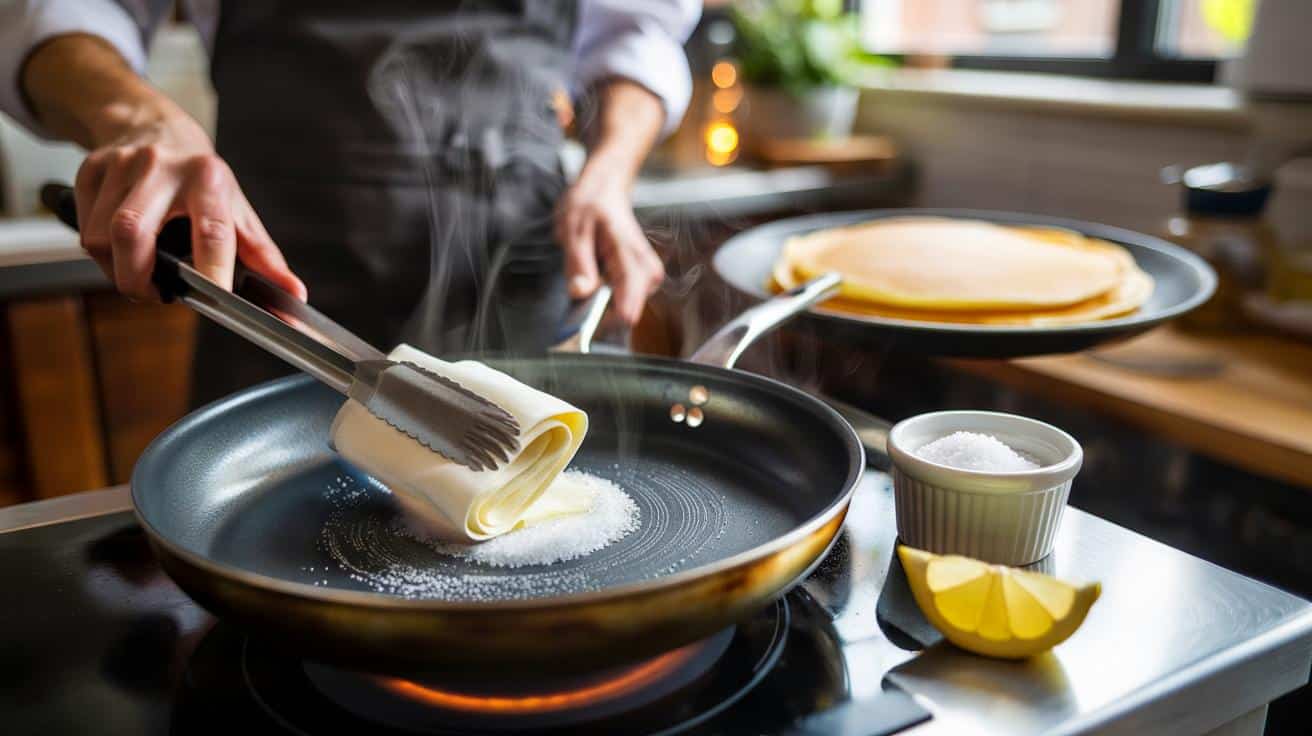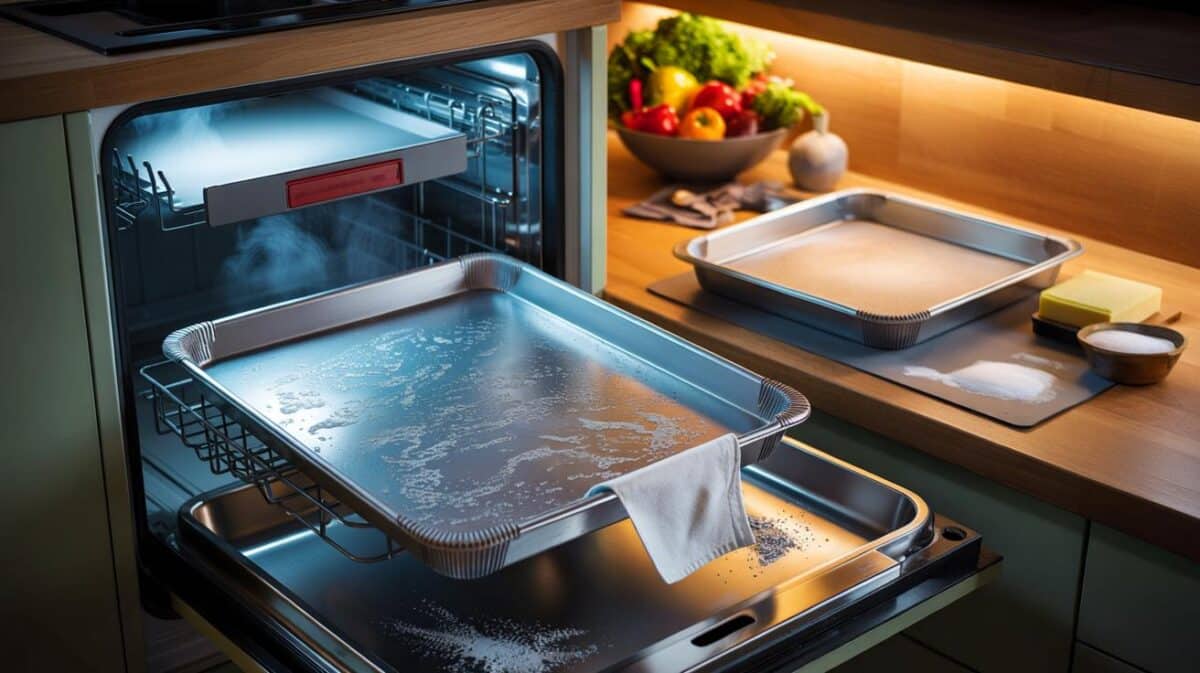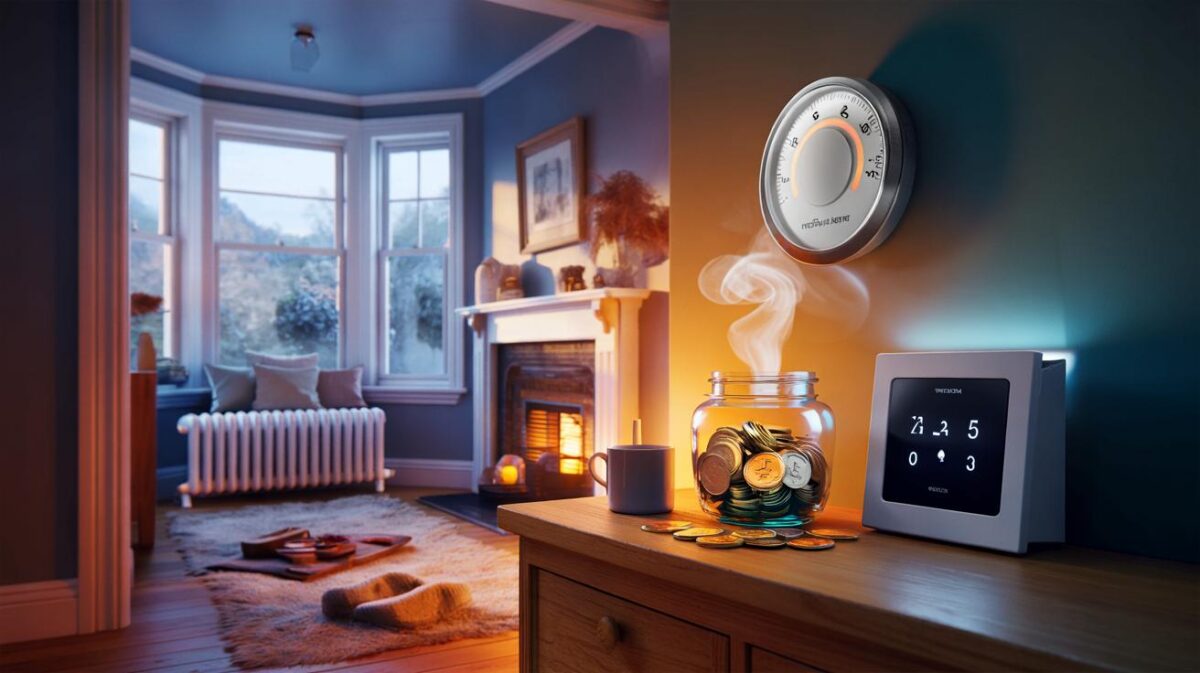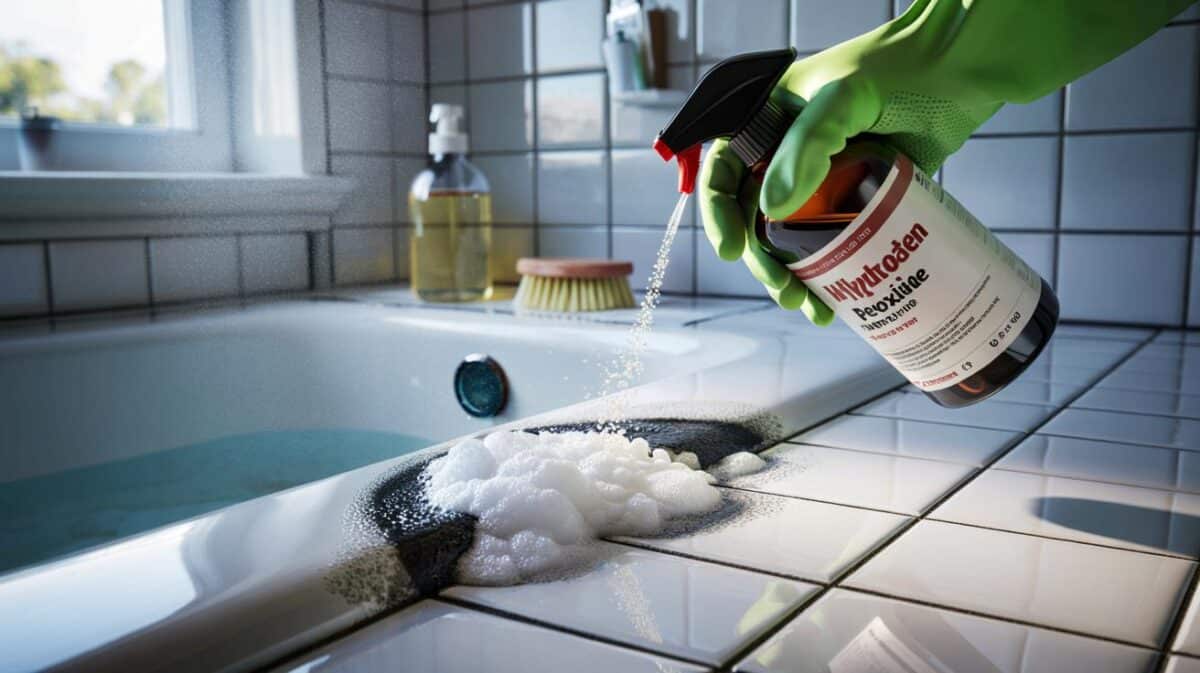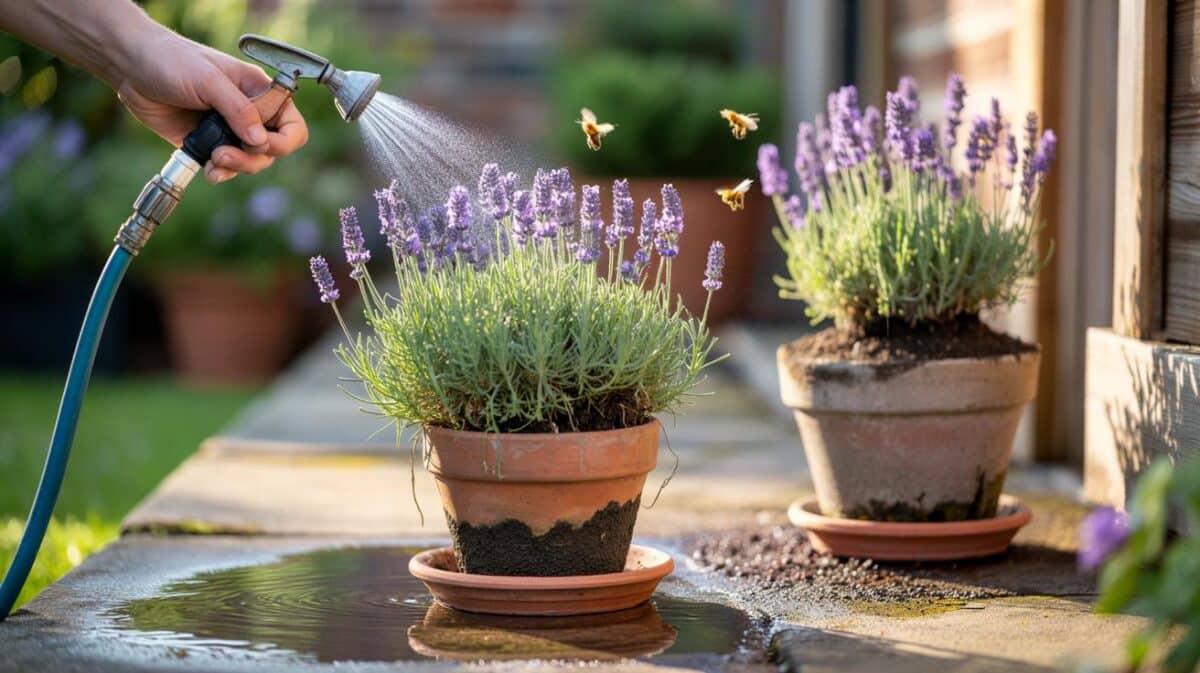You reach for oil, then butter, then more heat, then a new pan. There’s an easier way that chefs swear by, and it costs less than a bus fare—about 10p.
The breakfast rush at a tiny London café begins before the street has even warmed up. A chef in a black apron sets a steel pan over the hob, grabs a ramekin of table salt, and starts rubbing the hot surface with a wad of folded paper towel held in tongs. No drama, no butter, no gloss of oil. *The room smells like hot metal and lemon.* He pauses, wipes the pan clean, and pours a ladle of batter. The pancake lifts with a breath and slides like silk. No oil. No butter.
Why pancakes stick when you’re doing “everything right”
Your pan isn’t out to get you; it’s just doing what hot metal, wet batter and impatient humans tend to do together. Pancakes stick when the surface is too cool, too rough or too wet, so proteins in the batter latch on before steam can lift them free. **Heat, not fat, decides the fate of your first flip.**
We’ve all had that moment when the first pancake tears like wet paper and the second clings in silent protest. On Shrove Tuesday, searches for “pancakes sticking” spike across the UK as if the batter itself had dialled 999. A chef would call that first one the “tester”, but it only needs to be a test if the pan isn’t ready.
Here’s the physics in plain English. When a pan is properly hot, tiny pockets of steam form between batter and metal, a micro-hovercraft that keeps sticking at bay. If the pan is too cool, water spreads and proteins glue on; if it’s scorched, sugars burn before that steam layer arrives. Rested batter helps, but a prepped surface helps more, and that’s exactly what the 10p trick creates.
The 10p salt rub: the chef’s trick
Heat a clean, dry pan over medium-high until a drop of water skitters like mercury. Sprinkle in 1–2 tablespoons of plain table salt—about 10p’s worth—and, using tongs, scrub the hot surface with a thick, dry paper towel for 30–60 seconds. Tip out the salt, wipe again until the towel comes away clean, and cook your pancake in the bare pan. **The trick costs about 10p and uses nothing but plain table salt.**
This is not “seasoning” in the cast-iron sense, it’s polishing and drying the surface so batter meets hot, clean metal, not residues or moisture. On stainless steel and carbon steel, it works like a charm; on cast iron, it refines the existing patina. For non-stick, go gentle: warm the pan, swish fine salt lightly, then wipe—no hard scrubbing. Let’s be honest: nobody meticulously temp-checks a pan on a Tuesday night, so think sound and feel—the salt should whisper, not scream.
Most sticking is user error wrapped in good intentions: pan too cool, batter too eager, flip too soon. Use the 10p salt rub, preheat until the pan hums, and keep your batter rested 20–30 minutes so bubbles calm and gluten relaxes.
“The salt rub is like clearing your throat before you sing,” says chef Martina Costa. “You’re not changing the recipe—you’re removing what gets in the way.”
- Heat test: a droplet should dance, not sit and boil.
- Batter test: a spoon trail levels in 2–3 seconds, not instantly.
- Pan choice: stainless, carbon steel or well-seasoned cast iron shine with this trick.
- Non-stick note: use fine salt and a feather-light touch.
- Flip cue: edges dry, bubbles set, surface loses its wet sheen.
A lighter way to cook, and why you’ll keep it
Once you see a pancake slide in a bare pan, your brain rewires what “non-stick” means. You taste batter, not a cloak of butter or a sheen of oil, and the texture turns delicate—crisp-laced, tender-centred, more Paris crêpe than diner flapjack. **Once you see that first pancake glide, you can’t unlearn it.** Share it with the next person who mutters about doomed first pancakes, and watch their face when the flip just works.
| Point clé | Détail | Intérêt pour le lecteur |
|---|---|---|
| Pan temperature rules | Water droplet should skitter; steady medium-high, not full blast | Immediate cue for perfect timing and zero guesswork |
| 10p salt rub | Scrub hot pan with ~1–2 tbsp table salt, wipe clean, cook dry | Costs pennies, uses no oil or butter, stops sticking fast |
| Batter readiness | Rest 20–30 minutes; aim for ribboning that settles in 2–3 seconds | Smoother texture, even cooking, fewer tears at the flip |
FAQ :
- Does the salt scratch my pan?On stainless steel, carbon steel and cast iron, table salt acts as a mild polish and won’t harm the surface. On non-stick, use fine salt and a very light touch—or skip the rub and rely on a longer preheat and a dry wipe.
- Will my pancakes taste salty?No. You wipe the salt out before cooking, so none remains in contact with the batter. What you taste is cleaner batter and better browning.
- Can I use sea salt or kosher salt?Yes, though table salt’s fine grains polish more evenly and cost less, which fits the “10p” spirit. Big flakes can be a bit too abrasive on delicate coatings.
- What if I only have a non-stick pan?Preheat until a drop of water dances, do a gentle salt swish if you like, then wipe thoroughly and cook. Keep heat moderate and use silicone tools to protect the coating.
- My first pancake still sticks—now what?Let the pan recover heat, give it a second quick salt rub and wipe, and thin your batter slightly with milk. Wait for edges to dry before flipping. You’re closer than you think.

